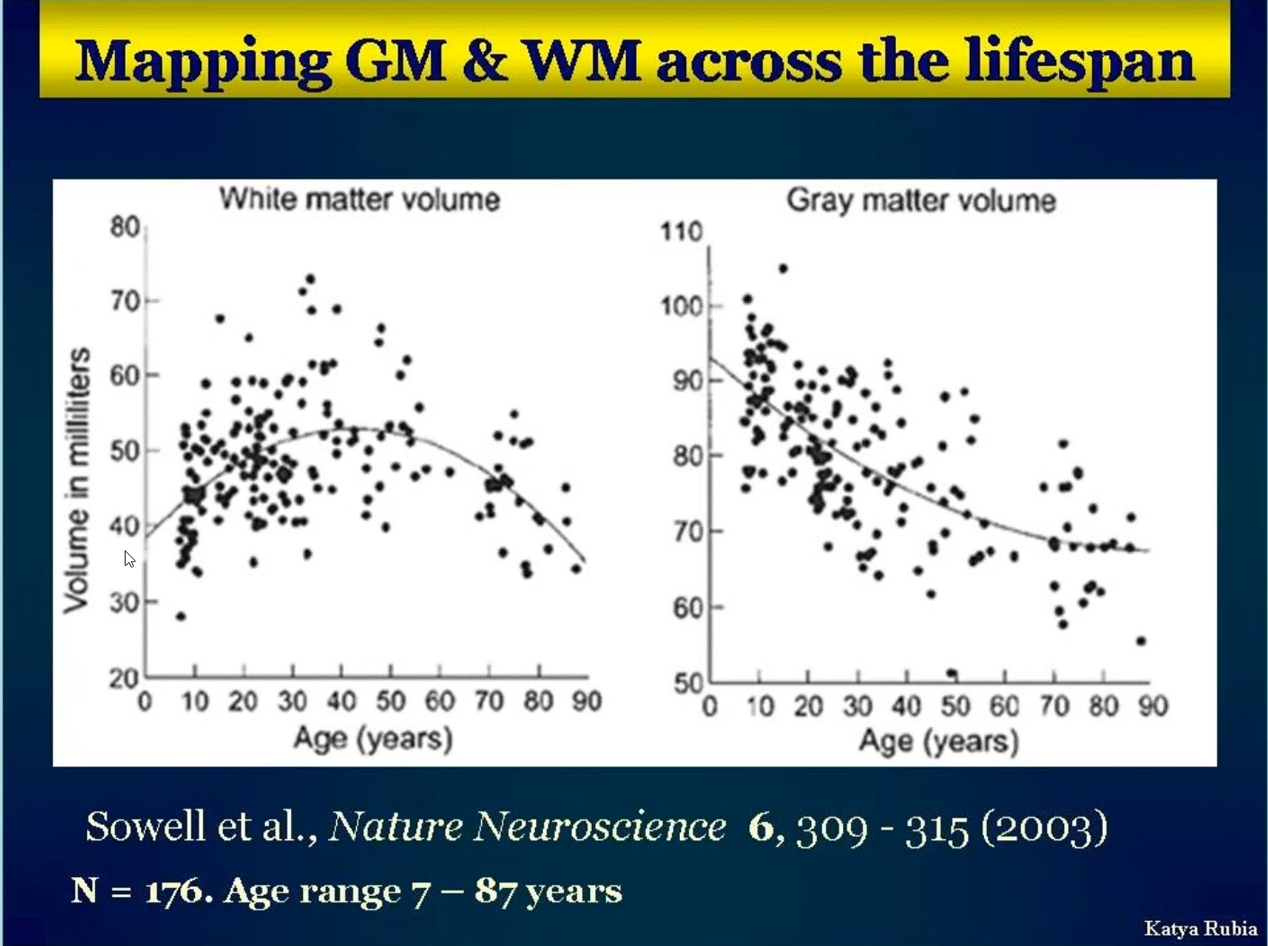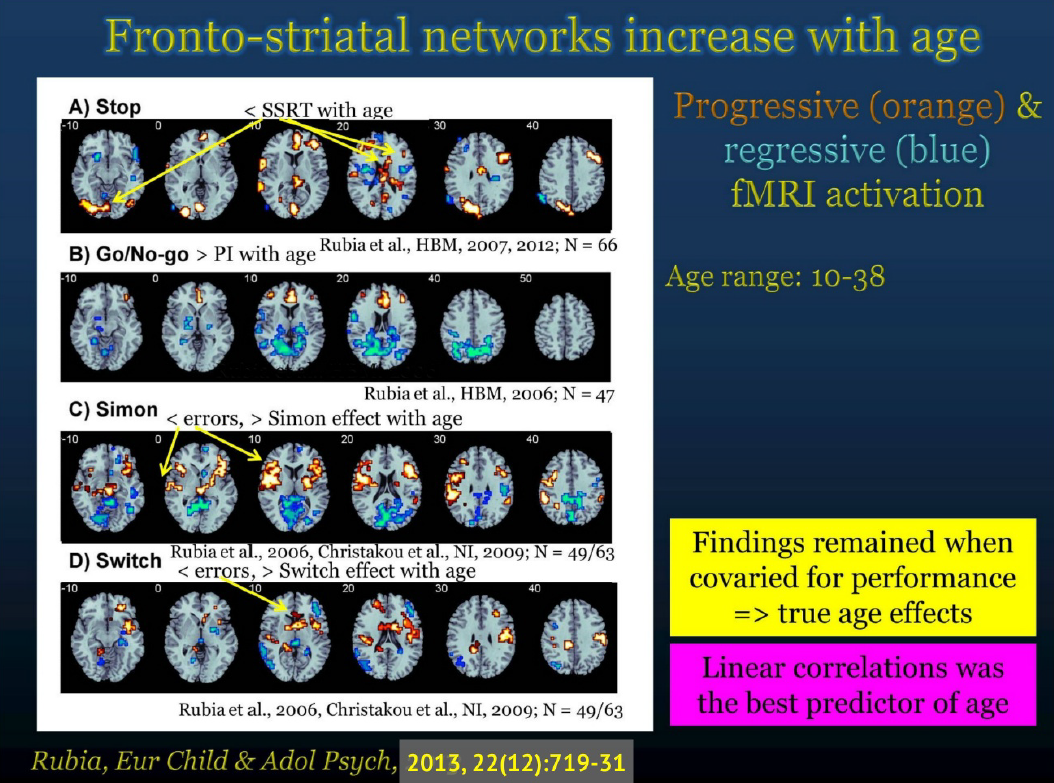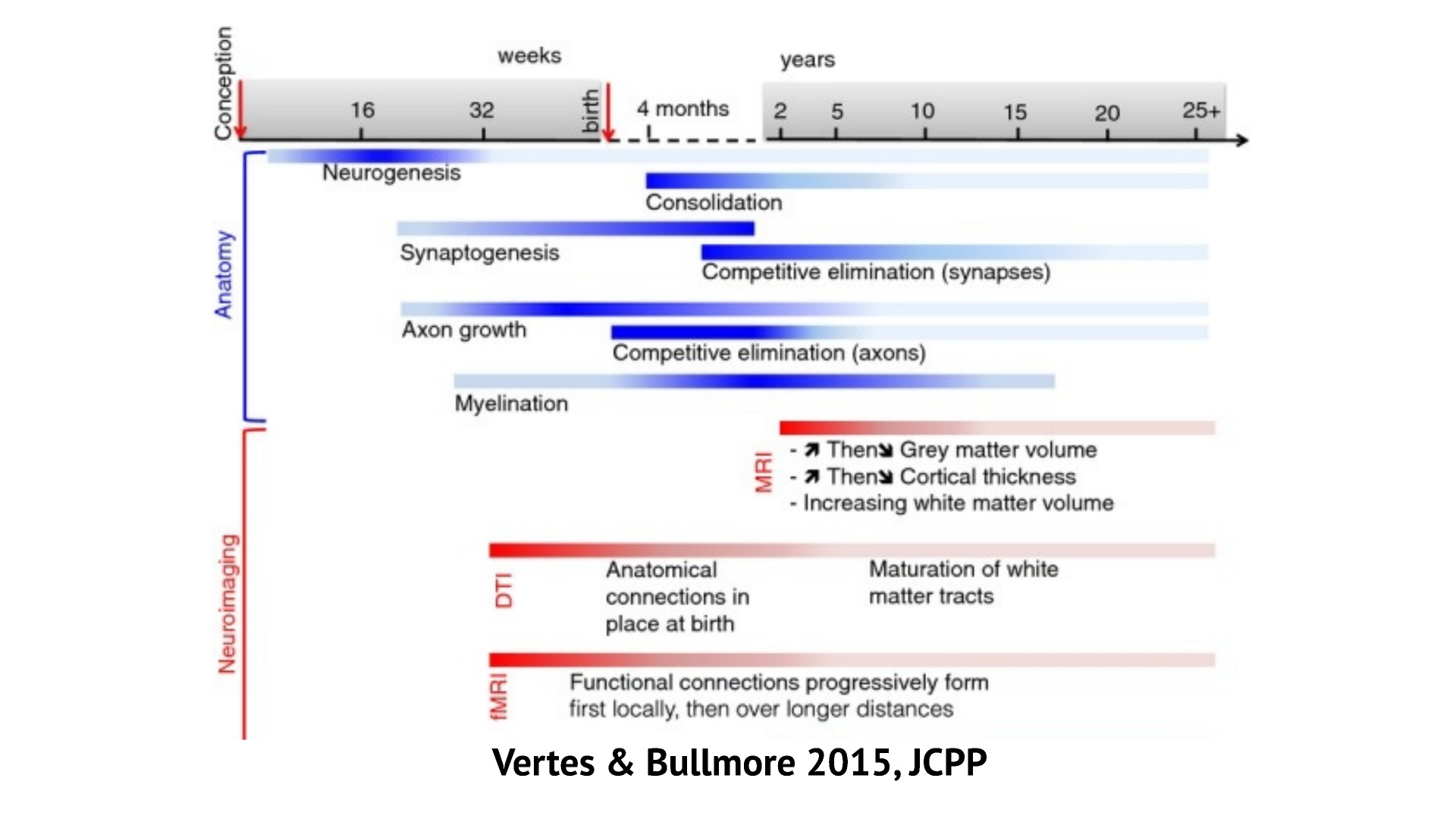Normal brain development

White matter volume increase from 0-45 (around), and decrease after 45; while grey matter decrease after 50s.

Q: how the ages affect choice: HOT EF. May the income affects their choice?
May the background of children affect the results of marshmallow experiment?

Conclusion
Normal brain structural development
- Increased WM/GM ratio
- Decrease in GM, cort thickness, surface area across adolescence
- Maturation of WM, GM & WM tracts well into mid -adulthood
- Latest regions to mature: FL (DLPFC), STL, PL, BG, Cb
- Latest WM tracts to mature: Fronto-striato-thalamic, fronto-PL/TL.OCC tracts, cingulate tracts
- Earlier in girls than boys (some studies find not sex differences)
- Structural brain development is associated with cognitive maturation
Normal brain function development of cool & hot EF (Executive functions)
- Functional maturation of task-relevant lateral “cool” FL-BG-PL &“hot” OFC/vmPFC-limbic networks
- Progressively increased functional connectivity during cognitive tasks & during rest (DMN)
- Progressively more deactivation of DMN (default mode network) with increasing age during tasks => better EF/Attention
- Progressively increased long-distance & reduced short-range connectivity => integration through segregation
- Network communities include anatomically proximal regions; with age, more distributed networks emerge
- Network efficiency improves with age
- Interhemispheric connectivity increases
Neuroimaging of ASD I
Objects
Describe how we can study the early (pre-diagnostic) development of autism
Which neurocognitive functions are important to study in the early development of autism?
sensory processing
social communication
attention/ executive function
others
What cognitive neuroscience techniques can be used to study early brain and cognitive development in autism?
Explain one key set of findings from cognitive neuroscience studies about the early development of autism
How have findings from cognitive neuroscience studies been used to design and assess early interventions for autism?
Autism
Neurodevelopmental condition characterised by difficulties in 2 main areas (DSM-5):
- Social-communication and interaction
- Restricted and repetitive behaviours and sensory processing atypicalities
Typical age of diagnosis: 4-5 years
80% of autistic individuals have co-occurring conditions (ADHD, depression, anxiety)
Which neurocognitive functions are important to study in the early development of autism?
Sensory processing atypicalities in autism:
- Hypersensitivity to sensory stimuli (e.g. intolerance of specific sounds, textures, smells)
- Hyposensitivity to sensory stimuli (e.g. blunted pain detection)
- Sensory-seeking (increased exploration of non-social sensory experiences e.g. stimming)
Developmental trajectories to core autism symptom domains are intertwined
Studying early neurodevelopment in autism: Limitations
Heterogeneity:
The autism phenotype & underlying neurocognitive mechanisms vary across autistic individuals so it is unlikely that the same neurodevelopmental trajectories will lead to ASD in all individuals
Specificity:
- Autism co-occurs at high rates with other neurodevelopmental conditions (ADHD, anxiety)
- It is not clear whether the alterations in neurodevelopmental trajectories identified in infant sibling studies are specific to autism or shared with other conditions
- ADHD (e.g.) shows similar social-communication & sensory alterations in infancy
Ethical concerns
Early interventions for autism based on neurodevelopmental studies: iBASIS-VIPP intervention


